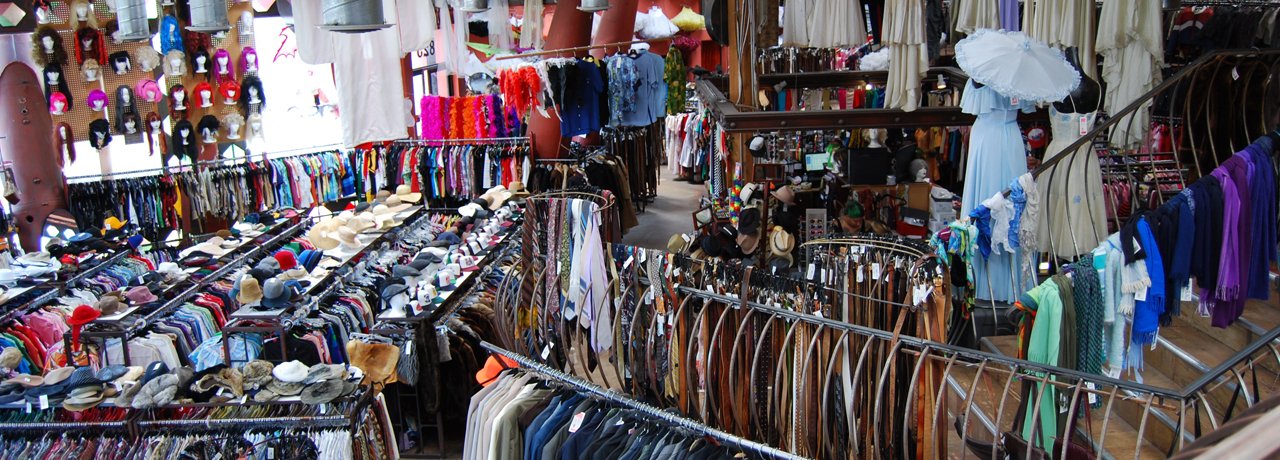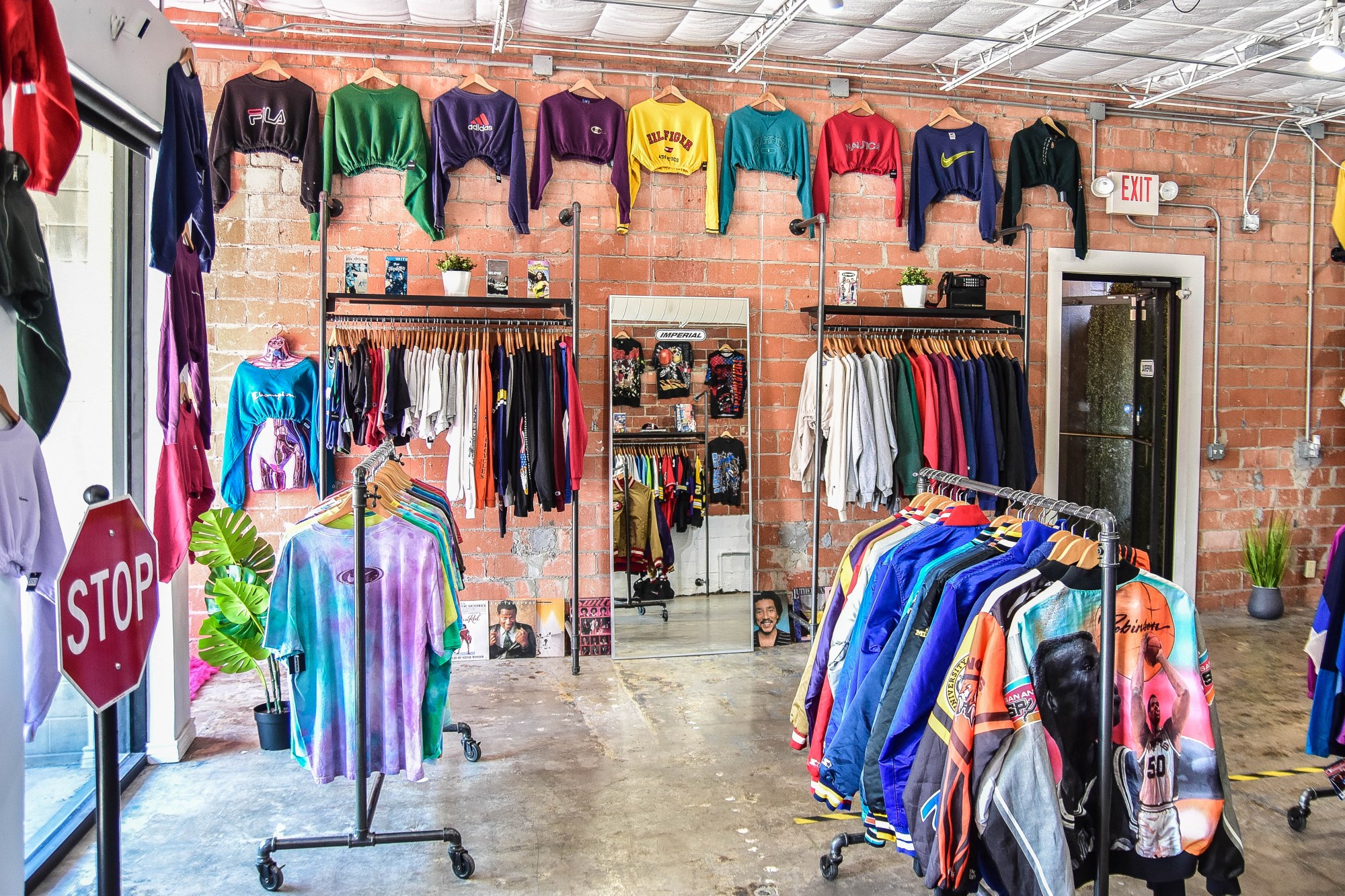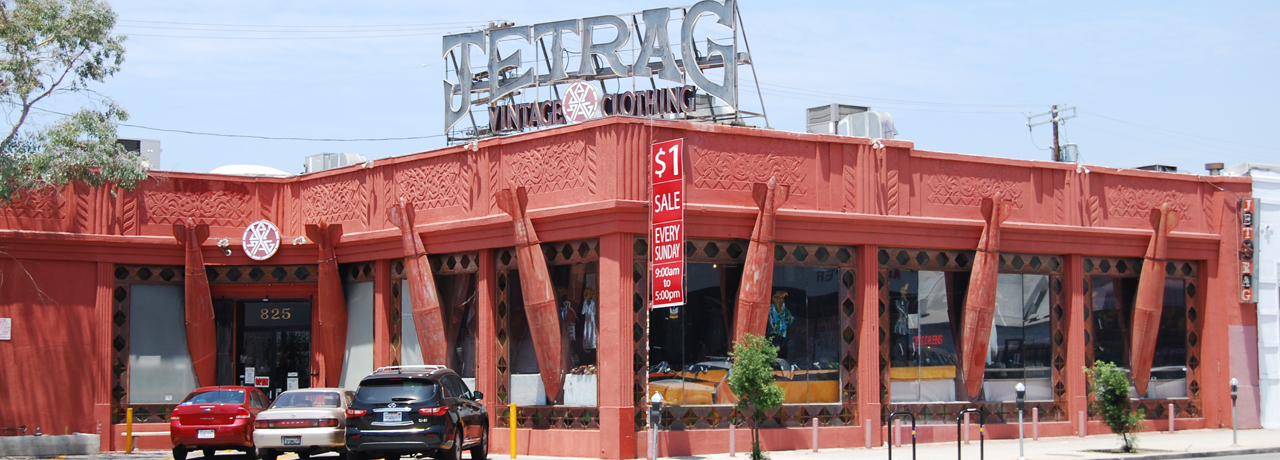By its very nature, people don’t get into secondhand clothing for the money. With its small profit margins, unpredictable sales patterns and long days spent combing through discarded garments for the occasional gem, it can be as much of a passion project as actually starting your own clothing line.
For Madeline Stedman, owner of the recently opened Finn Vintage in Brooklyn, months of conscientious brand-building and sourcing was meant to lead to a blossoming spring season, but when the coronavirus pandemic began cresting in March, she describes her reaction succinctly: “Fear.”
“We just opened in November 2019 and the winter months were challenging, as they are for retail in New York, so I was really looking forward to the spring season,” she recalls. “When we shut down, I was genuinely concerned I would lose the business.”
The vast majority of vintage shops are small businesses—the kind that have struggled to get necessary governmental assistance—and it’s forced many store owners into a kind of existential crisis. As The New York Times notes, it’s possible that as many as 110,000 small businesses closed between March and May. On top of that, the pandemic has accelerated the changes going on across the vintage and thrifting industries, which, like so many business models, are moving increasingly online—leaving owners to translate the idiosyncrasy and individualism of their shops to the limiting formats of social media and e-commerce.
With the coronavirus still raging and many people’s eyes fixed to the streets where Black Lives Matter and anti-police brutality protests continue to take place, Marissa Johnson’s landlord began to pressure her about whether she would be returning to her storefront. She had been running Fox & Fawn in Greenpoint since 2007, and had just moved to a new location in the same neighborhood a month before the pandemic hit. Johnson took stock of her options and made the difficult decision to shut her doors and use Instagram as Fox & Fawn’s main sales outlet moving forward.
“‘Staying-in-the-space’ anxiety outweighed ‘walking-away-from-the-lease’ anxiety,” Johnson says. “It was the lesser of two evils and I decided to take a risk and take the plunge of closing the storefront and walking away from it. I’ve had a storefront for 13 years, so it really is a massive thing where the reality of it hit me afterwards.”
Many local secondhand and thrift stores serve vital functions beyond simply being a retail space. Out of the Closet, a group of thrift stores in Los Angeles, donate 96 cents out of every dollar to programs for people affected by HIV/AIDS. Housing Works in New York combats both the AIDS crisis and homelessness. And stores like Fox & Fawn served important roles as safe, welcoming spaces in rapidly changing and gentrifying neighborhoods.
“I felt pretty depressed for a while realizing that [many] people feel pretty comfortable [in the store] and it’s a safe space for them to be in,” Johnson says. “I really loved that. That’s part of the reason I struggled to keep it open.”
Shops like Fox & Fawn have tried to translate their emphasis on inclusivity to digital spaces, sharing information about Black Lives Matter gatherings and donating proceeds to organizations supporting LGBTQ+ people and Black women. BLK MKT Vintage, an online store founded by Kiyanna Stewart and Jannah Handy, collects and curates a stunning collection of Black antiques and ephemera. They launched a line of Juneteenth ringer tees inspired by Angela Davis, and consistently provide messages of Black liberation and unity to its nearly 260,000 Instagram followers. As do smaller Black-owned outfits like Installation BK, run by Margot Hughes, and Atlanta’s NELLO Vintage, run by Chanelle Harris.
Some businesses, like Imperial Vintage Clothing in Houston—another Black-owned vintage shop—were well positioned to ride out the turbulence of the pandemic. With over 36,000 Instagram followers, a clear identity built around Texas culture and throwback sports, and a well-designed online shop, Imperial says it faced minimal disruption this year.

“We already had a strong online presence along with an established e-commerce outlet,” says Andrew Parker II, the shop’s owner and founder. “The only thing that changed for us during the pandemic is that we began posting more products to redirect people to our website.”
But many stores had to tweak their digital practices on the fly, not only converting to online retail, but adjusting how they curated their feeds. Stedman says she’s geared the Finn Vintage Instagram more towards sales instead of purely focusing on aesthetics, posting garments in her Stories and corresponding with customers in her DMs.
“Instagram was more a tool to curate the Finn brand than an additional selling tactic. During the pandemic, I finally had time to focus on cultivating an online presence and used Instagram Stories as Finn’s selling platform,” she explains. “Everyone responded really well and I have customers all over the US now.”
Johnson has gone even farther with Fox & Fawn. After ultimately deciding to give up her physical retail space and move online-only, she’s developed a system where shoppers DM her to get their name on file, and then comment “Ring me” with their last name on the items they want to purchase. She says she’s struggled to keep her per item price low, however, because the visibility of garments has decreased and she’s not getting the same kinds of casual shoppers who might amble into her store for no particular reason and leave with a full bag.
“My price point has always been pretty low,” she says. “I really think that vintage clothing is so inflated in price and has become so inaccessible to people. It’s something I feel really strongly about when it comes to fashion in general.”

Finn Vintage’s Stedman echoes that sentiment, noting that while at first she saw many stores offering discounts and promos to draw business, lately she’s seen an increase in applying the opposite tactics.
“Since reopening, I have noticed some businesses raising their prices higher than pre-pandemic, in an effort to make back what they lost,” she says. “While I can understand this, I personally want to keep my pricing fair and affordable because everyone should be able to shop vintage. I see so many stores saying to be green and shop vintage, yet their price point is not accessible to most people.”
The future of casual thrifting is especially murky with so many stores moving to digital only. Kyla B., an avid thrifter in Brooklyn, says that the nature of internet shopping takes away much of the freedom that comes from walking into a vintage store and browsing.
“Online, I’ve always had to be hyper specific about what I want because you’re basically gaming the search algorithm,” she says. “But if I was going somewhere IRL, I was way more likely to only have some vague idea what I want. Online it’s like, ‘Earth t shirt men’s XL,’ with a bunch of filters on it and in real life I am more like, ‘What if I got a shirt with a plant on it?’”
Indeed, resale sites like Depop, Grailed and Poshmark are built around intricate systems of filters and hashtags. Searching by brand is also something that’s emphasized and feels antithetical to the brick-and-mortar vintage shopping experience. Stedman says that she’s adjusted not only what she posts, but the actual items she’s been buying to match the changing needs of her clientele.
“I was much more focused on sourcing unique, pre-80s garments before the pandemic. When I find an older piece that is still in beautiful condition, it is like winning the lottery, but they are more valuable and often take longer to sell,” she says. “I have definitely shifted my focus to finding versatile, easy, comfortable garments such as dresses, shorts and blouses. My 80s and 90s garments are definitely selling better than ever.”

The aforementioned outlets do what they can to ensure quality control with practices like vendor ratings, digital vetting and refunds if the item that shows up is significantly different than what was advertised, but there are still many aspects of thrifting that don’t yet smoothly translate to digital sales. It’s challenging to tell how a material feels just from pictures, and cleverly angled images can disguise stains and snags. Because almost all digital thrifting is final sale, there’s always a bit of a leap of faith that the purchaser takes, particularly with high-priced designer vintage.
Trusting veterans in the secondhand and vintage industries as they move online is a wise call, as people like Johnson have years of experience procuring, inspecting and describing garments to customers. Shops like Finn Vintage work with professional photographers to properly shoot pieces and give browsers a better idea of how they will translate to their closet.
Beyond the inherent stress of running a small business during a crisis, many in the industry are not able to get the governmental help they need due to bureaucratic hangups, disinterested local and national authorities, and ever-changing guidelines that are not well circulated.
Parker II, who is in the midst of opening a second location in Austin, does lament the “lack of communication from Texas officials,” which he says made it challenging to prepare for reopening and ensure new procedures were being implemented in his store. Johnson had a trying time applying for various loans and grants, and because New York rules initially prevented business owners from filing for unemployment, the system was already backlogged when she was finally able to apply.
“There’s just no direction of where the help is gonna come from, for any of us. It was really frustrating and very stressful,” she says. “I feel like the rules have to be changed a bit and they weren’t, they were just cobbled together.”
With states reopening, so too have the vintage and secondhand stores that were able to ride out the last few months. Stores like Finn, Pilsen Vintage in Chicago and Jet Rag Vintage in LA are taking precautions, limiting the number of shoppers at a time, requiring masks and taking temperatures at the door.
“As far as keeping things sanitized and clean, we provide face masks, we disinfect. We ask people to wash their hands or use sanitizer before coming into the store,” says Pilsen Vintage manager Maggie Reynoso. “It’s been working out, people are super conscious about the pandemic.”
Though it would be fair to worry about a general turn away from buying used clothing as a result of the pandemic, store owners and shoppers alike say there isn’t any kind of widespread hesitance towards the industry.
“I don’t think there’s been a single case of COVID-19 spread via the mail so I feel super fine about buying things secondhand and having them mailed to me,” Kyla B. says.
Keren Lobel, assistant curator and social media manager at Jet Rag, hopes that people will have used this time to critically analyze their wardrobe and see shopping vintage as not just a stylistic choice, but a commitment to creating a better, more sustainable world.
“I feel like after people have been spending so much time at home, cleaning out their closets, making room for new things, they might come to realize how much ‘disposable fashion’ has been taking up space in their closets, and at a higher cost,” Lobel says. “On-trend fashion today is all being replicated from our parent’s photographs. Really, anything goes these days, and good quality is found in vintage clothing.”

